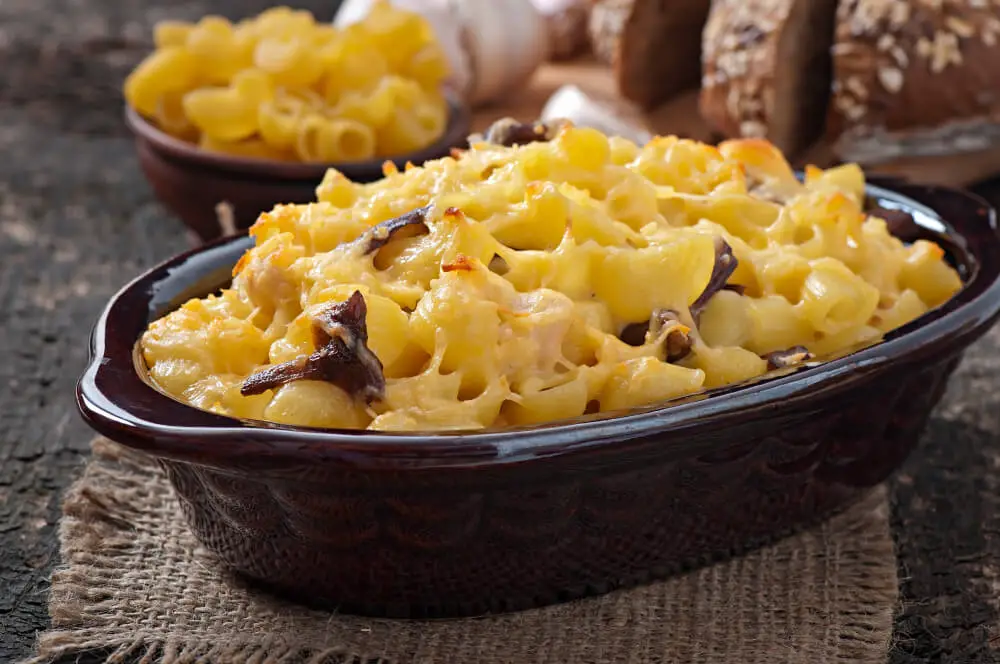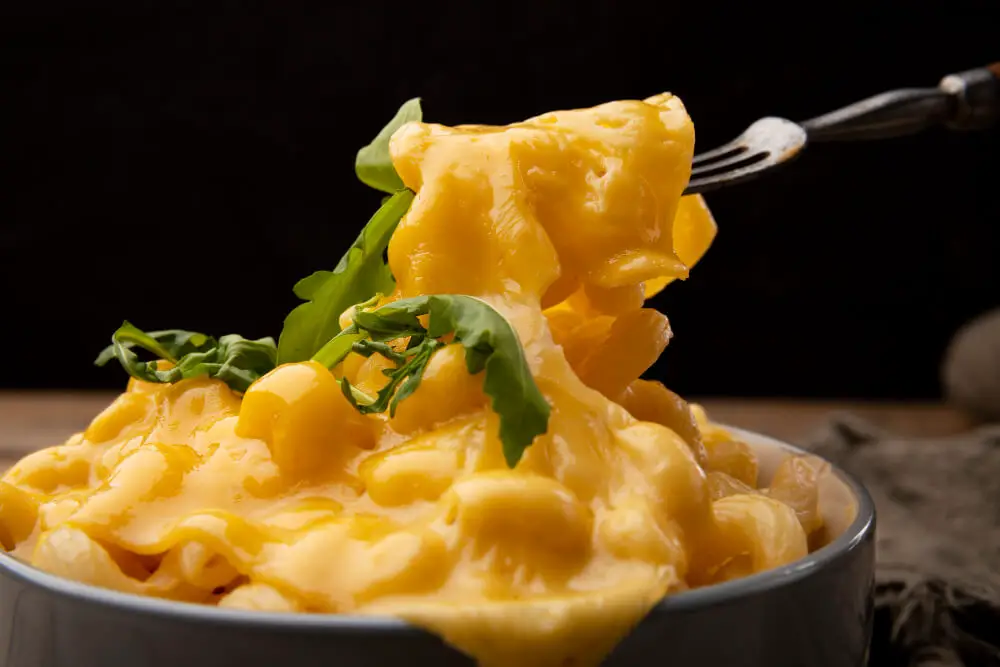Introduction to Protein Mac and Cheese
Macaroni and cheese, a classic comfort food, has been a favorite for generations. Traditionally made with pasta and a rich cheese sauce, it’s known for its creamy texture and comforting taste. However, in recent years, a new twist on this beloved dish has emerged: Protein Mac and Cheese. This version incorporates high-protein ingredients, transforming the dish into a more nutritious meal without sacrificing its delicious appeal. Ideal for health-conscious individuals or those looking to add more protein to their diet, this dish maintains the essence of traditional mac and cheese while offering additional health benefits.
The importance of protein in our diet cannot be overstated. Proteins are the building blocks of life, essential for the growth and repair of body tissues. They play a crucial role in various bodily functions, from building muscle mass to supporting a healthy immune system. A diet rich in protein can also aid in weight management, as it helps in feeling fuller for longer, reducing the likelihood of overeating. For those who exercise regularly, protein is crucial for muscle recovery and growth. Incorporating protein-rich foods like Protein Mac and Cheese into meals is an excellent way to ensure adequate protein intake, making meals not just enjoyable but also nutritionally balanced. For more on transforming classic dishes, check out our guide on homemade pizza with store-bought dough.
The Science Behind Protein-Enriched Mac and Cheese
The introduction of protein into mac and cheese transforms this classic dish from a simple carbohydrate-rich meal into a more balanced, nutritious option. The role of protein in Protein Mac and Cheese is multifaceted. Firstly, it enhances the nutritional profile, providing essential amino acids necessary for muscle repair and growth. This is particularly beneficial for athletes or those engaged in regular physical activity. Secondly, protein increases the satiety level of the dish, helping to keep you full longer and potentially aiding in weight management.
The chemistry of combining ingredients in Protein Mac and Cheese is a delicate balance. Proteins, when heated, undergo a process known as denaturation, where their structure unravels, leading to changes in texture. This reaction must be carefully managed to avoid toughness in meat or a rubbery texture in cheese. The starch from the pasta plays a crucial role too, as it helps to thicken the cheese sauce, providing a creamy consistency that coats the pasta evenly. The fats in the cheese contribute to the rich, smooth mouthfeel, while the carbohydrates in the pasta offer a tender bite. Balancing these components – protein, fat, and carbohydrates – is key to achieving the perfect Protein Mac and Cheese, where taste, texture, and nutritional value are in harmony. Discover more about the magic of combining flavors in our article on chicken bacon ranch pizza.
Popular Protein Mac and Cheese Recipes
The internet is a treasure trove of recipes for Protein Mac and Cheese, each offering a unique twist on this classic dish. One popular variation incorporates grilled chicken breast, known for its high protein content and lean nature. This recipe typically involves cooking the chicken separately with herbs and spices before mixing it into the creamy cheese sauce, adding a savory depth to the dish. Another sought-after version uses ground turkey, which is lower in fat compared to red meats, making it a healthier option while still boosting the protein content.
Vegetarian versions are equally popular, where plant-based proteins like quinoa, lentils, or black beans are used. These ingredients not only add protein but also fiber, making the dish more filling and nutritious. Some recipes even include protein-rich dairy products like Greek yogurt or cottage cheese, which contribute to a creamier texture while increasing the protein content.
In terms of key ingredients for protein enhancement, the choices are diverse. Lean meats like chicken, turkey, and even lean beef are excellent sources of high-quality protein. For a vegetarian twist, beans, lentils, and chickpeas offer not just protein but also fiber and a variety of nutrients. Dairy products like Greek yogurt, cottage cheese, and high-protein cheeses can be used to enhance the creaminess while boosting the protein content. These ingredients can be creatively combined or used individually to create a Protein Mac and Cheese that is not only high in protein but also rich in flavor and texture. The key is to balance the protein sources with the traditional elements of mac and cheese to create a dish that is both nutritious and satisfying.
Explore more protein mac and cheese recipes here.
Nutritional Benefits
The health benefits of a protein-rich mac and cheese are significant, especially when compared to its traditional counterpart. Protein is essential for muscle repair and growth, making this dish particularly beneficial for those with active lifestyles or those looking to build muscle mass. Additionally, protein aids in satiety, meaning that a serving of Protein Mac and Cheese can keep you feeling full for a longer period, which can be helpful for weight management. This version of mac and cheese is also typically lower in simple carbohydrates, depending on the ingredients used, which can be beneficial for blood sugar control.
Comparatively, traditional mac and cheese is often high in carbohydrates and fats, especially if made with full-fat cheese and butter. While it is undoubtedly delicious, it offers less in terms of nutritional balance. It is typically lower in protein and higher in calories, which might not be ideal for those monitoring their calorie intake or seeking a more balanced diet. In contrast, Protein Mac and Cheese incorporates healthier protein sources, potentially lower-fat dairy options, and can even include whole grain pasta, making it a more balanced meal. This not only contributes to a healthier diet but also aligns better with various dietary goals, from muscle building to weight loss.
Cooking Tips and Techniques
Creating the perfect Protein Mac and Cheese involves a blend of culinary skill and understanding of ingredients. One of the best practices is to choose the right type of protein. If using meat, opt for lean cuts like chicken breast or turkey. For a vegetarian option, consider high-protein, low-fat choices like tofu, tempeh, or a variety of beans. Cooking the protein correctly is crucial; it should be well-seasoned and cooked just until done to avoid toughness.
When it comes to the cheese sauce, consider using a mix of cheeses for depth of flavor. Incorporating a strong cheese like sharp cheddar with a smoother, creamier cheese can create a rich and satisfying taste. Be mindful of the fat content in the cheeses and balance it with lower-fat milk or cream options. Another tip is to use whole grain pasta, which not only adds fiber but also holds up better to the sauce and protein additions.
For the common mistakes to avoid, one of the biggest is overcooking the pasta. It should be cooked al dente, as it will continue to soften when mixed with the hot cheese sauce. Another mistake is adding too much cheese or using only high-fat cheeses, which can make the dish overly heavy and greasy. Also, be cautious with seasoning; too much salt can overpower the natural flavors of the cheese and protein. Lastly, avoid under-seasoning the protein, as it is a key component of the dish and should be flavorful in its own right. By avoiding these pitfalls, you can ensure your Protein Mac and Cheese is delicious, nutritious, and satisfying.
Customizing Your Protein Mac and Cheese
Protein Mac and Cheese offers versatility, allowing adaptation to suit various tastes and dietary needs. For protein sources, the possibilities are diverse. Meat lovers can opt for grilled or baked chicken, lean ground turkey, or even small chunks of lean beef. You can season and cook these meats separately before adding them to the dish, ensuring they maintain their flavor and texture.
For a vegetarian twist, tofu, tempeh, or seitan make excellent choices. They absorb flavors well and add a unique texture to the dish. Legumes like black beans, chickpeas, or lentils are also great options, offering not just protein but also fiber and other nutrients. If you lean towards dairy-based proteins, adding cottage cheese, ricotta, or Greek yogurt to the cheese sauce can substantially increase the protein content while enhancing creaminess.
People with dietary restrictions, Protein Mac and Cheese can still be a go-to dish. For a vegan version, use plant-based cheeses and milk along with tofu or tempeh as the protein source. Nutritional yeast can add a cheesy flavor without any dairy. For a gluten-free version, opt for gluten-free pasta varieties made from rice, quinoa, or legumes. Be sure to check the labels on all your ingredients to ensure they meet your dietary needs. For more gluten-free options, explore our comprehensive guide on gluten-free mac and cheese.
FAQs
Q: Can I make Protein Mac and Cheese ahead of time?. A: Yes, you can prepare Protein Mac and Cheese in advance. Cook it until it’s just underdone, as it will continue to cook when reheated. Store it in an airtight container in the refrigerator and reheat in the oven or microwave. Be aware that the texture might change slightly upon reheating.
Q: What are the best cheeses for a creamy texture? A: For a creamy texture, choose cheeses that melt well. Good options include cheddar (for sharpness), Monterey Jack (for smoothness), and Gouda (for a buttery flavor). Combining different cheeses can create a more complex flavor profile.
Q: How can I increase the protein content without making the dish dry?. A: To increase protein without sacrificing moisture, consider adding moist protein sources like cottage cheese or Greek yogurt. To avoid overcooking meat, ensure it remains properly cooked. Adding a bit of broth to the cheese sauce can also help maintain moisture.
Conclusion
In summary, protein mac and cheese is not only a delicious and comforting meal but also a nutritious option for those looking to increase their protein intake. Whether you’re a fitness enthusiast, someone with dietary restrictions, or just a lover of mac and cheese, this dish offers a versatile and satisfying experience.



